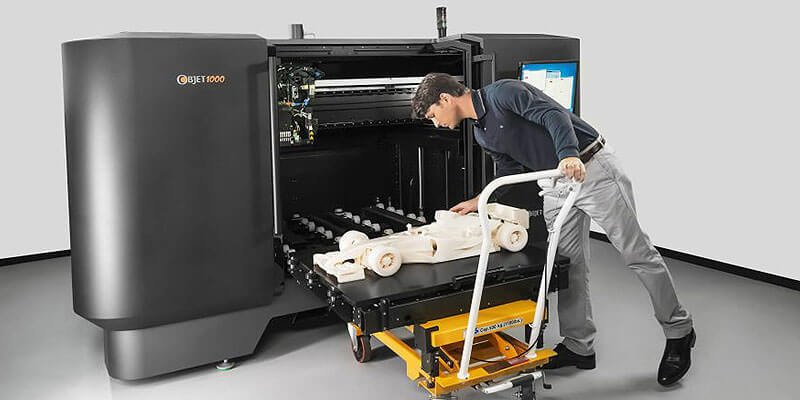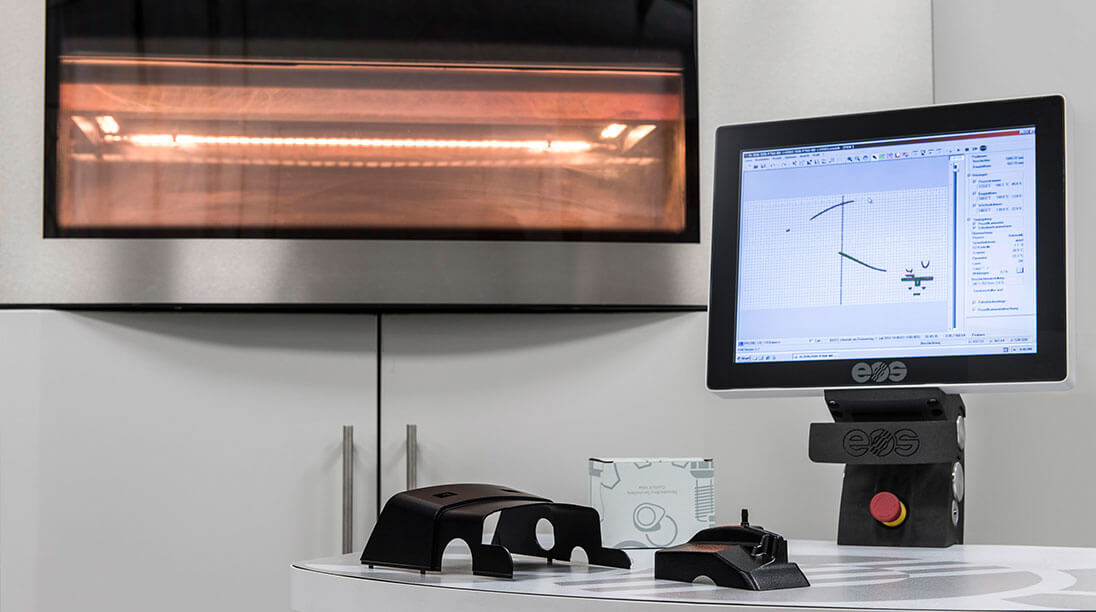Initially, parts will be printed for its truck range but the company says it has future plans to expand the service to passenger cars.
Owners and repair businesses can order parts from a catalogue, including components for models that are no longer produced. The process from order to supply is claimed to be quick and of the same quality as traditional injection-molded parts.
While owners benefit from the speed and accuracy of the process, for dealerships and distributors it means significantly reduced warehousing and inventory costs associated with storing out-of-date or slow-moving items.
Mercedes-Benz Trucks global director of marketing and operations for customer service Andreas Deuschle said spare parts will incorporate high-quality plastic components including covers, spacers, spring caps, air and cable ducts, clamps, mountings and control elements.
The printed spare parts are created with state-of-the-art 3D printers based on the Selective Laser Sintering (SLS) printing process.
The process has been optimised by Mercedes-Benz Trucks to maximise quality.
Mr Deuschle said that every 3D component can be ordered by the customer using a special spare part number from the parts catalogues.
GoAutoMedia publisher, John Mellor, via consulting firm Deloitte, alerted dealers three years ago to the prospect of spare parts being printed on the spot where they are needed rather than being drawn from stock sitting in for years in warehouses.
“So even after several decades, rapid supply to the customer is ensured via the Mercedes-Benz Logistic Supply Chain through all the sales stages – all over the world,” he said.
Mr Deuschle said a problem in the spare parts business was securing supply even for model series which are no longer produced.
“This means that the range also includes spare parts for which there is only a low demand in small quantities every year,” he said.
“Producing them is increasingly uneconomical for suppliers – production facilities and tools often have to be retained and maintained for years.
“With the 3D printing process these challenges are a thing of the past because every 3D spare part is available on demand at short notice all over the world.”
The concept is not new to the automotive industry though it is quickly gaining converts.
Californian company Carbon3D is supplying production parts made from polymers to BMW, Mini and Ford.

Daimler plans 3D printers to quickly manufacture car and truck parts across the model and year range.
Mini models use a 3D-printed decorative side scuttle, while the Ford Transit Connect light-commercial vehicle has been fitted with flexible bumper parts.
Carbon3D – which has former Ford CEO Alan Mulally as one of its directors – is also working with Delphi Automotive to arrange more customers.
Ford last year reported that when testing the 3D process on a wiring connector, it took seven hours to make the part compared with 22 hours to make the prototype using more traditional methods.
Separately, Alcoa – an American manufacturing company – last year invested $75 million in its own research and development centre in Pennsylvania to develop 3D printers that could form components from aluminum, titanium and other alloys.
Meanwhile, General Electric has begun using 3D printers to manufacture fuel nozzles out of powdered metals for jet engines.
The process – also called additive manufacturing – allows manufacturers to reduce the investment and time-consuming task of repeatedly making tools and dies for new parts.
The printers allow finished parts to be made quickly and economically, either for testing or as a mold for casting.
It also allows car-makers and accessory businesses to make personalised car parts for customers, without needing the economies of scale of producing hundreds of similar parts.
By Neil Dowling













 Read More: Related articles
Read More: Related articles

